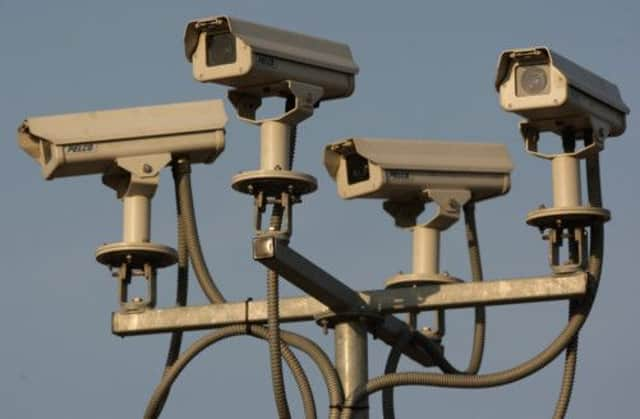Stuart Waiton: The real reason Big Brother is watching you


The obvious question this growing level of monitoring raises is: “Are we now living in a Big Brother society?” From my own research and experience of this issue I would, rather annoyingly perhaps, have to say, yes and no. Essentially, I think the best way to categorise this rise and rise of surveillance is with the term Big Brother on Prozac.
I use this term to illustrate the rather defensive and nervous way that CCTV cameras have emerged in society – in contrast to the overtly authoritarian, Orwellian idea of Big Brother stamping down on us from above. In some respects, the desire for surveillance has come not from the authorities but from the people themselves. But equally, and arguably more importantly, the push for these cameras has come from what’s best described as an “anxious elite”, rather than from an assertive system of authority.
Advertisement
Hide AdAdvertisement
Hide AdRecent events in England illustrate this latter point about the anxious elite best of all. During the riots in 2011, one of the most remarkable images captured on television was not the looting and burning of buildings by the rioters, but the pictures of riot police standing back while chaos ensued. While not being a fan of authoritarian policing, I recognise that there are times when authoritative and even aggressive policing would be expected – a riot would be one such occasion. And yet, here we witnessed a serious problem, where the streets in some places were literally burning, and yet the riot police appeared completely unsure about what to do. At the level of policing, and arguably more widely in the corridors of power, what we witnessed during the riots was an almost complete loss of authority by the “authorities”.
There are a number of explanations for this: a more risk conscious police force, a more litigious society leading to nervous forms of policing, or a breakdown in establishment coherence – where the police can no longer be sure they will be backed up by other institutions and people in power. All have some relevance.
Elsewhere we see something similar, for example in the way that football fans are policed. One of the reasons that CCTV surveillance is so rife at games today is because, the police argue, it allows them to act after the event, and that this is necessary because the police could not possibly “wade in” to a crowd for fear of being assaulted themselves.
What I find so interesting about this idea of not “wading in” – a point of view argued recently by ex-chairman of the Scottish Police Federation, Les Gray – is that when I used to go to matches as a kid, the police would often “wade in” to the crowd. And this was when there really was a crowd, not all-seater stadiums, no CCTV to watch your back, no security guards at every turn, just masses of packed in, shouting men. The lone police officer doing the wading in would generally come out of the crowd covered in spit and hatless. But next week another officer would see someone throw a coin or something of that ilk and in they would go again. Today the police seem less keen to get stuck in and more inclined to walk around with cameras to collect evidence after the “crime” has been committed.
But this is to look at this issue too much from the perspective of the police when in fact a major drive for CCTV comes from demands from sections of the public and from local politicians saying that “something must be done” in their area. In the area where I lived in in Glasgow, East Pollokshields, this is exactly what happened.
What was interesting about this development was that the leaflet about the “community safety” meeting that came through my door, and which began the process that led to the installation of enormous CCTV cameras throughout the estate, was the only leaflet I had received from my then MP Mohammad Sarwar. Of all the issues he could have promoted himself through, it appeared that crime, safety and eventually surveillance cameras, was the one he felt most at ease with.
And yet, at the community safety meeting, we discovered that crime was actually down in this area and much higher in other areas covered by the same police force. But the point for Mr Sarwar was to engage not just with crime, but with the fear of crime, and as people in the area were clearly nervous about crime, then something needed to be done.
The “solution” of course was CCTV cameras: a quick, technical solution that was highly visible and clearly illustrated that the MP had “done something”. Mohammad Sarwar’s political authority in the area may have been weak, his ability to engage the electorate with wider social issues largely non-existent, his active support from local people literally non-existent – but the one thing this empty politician could safely engage with was the issue of crime and people’s fear.
Advertisement
Hide AdAdvertisement
Hide AdAt public meetings, there were no supporters cheering Mr Sarwar on. He was very much alone and was clearly rattled by any opposition, even when it came from just one or two individuals, myself included. This was not an authoritative politician in action but one with little or no political authority who knew he could engage with our wider sense of anxiety and insecurity through the installation of CCTV cameras. And it appears today that everyone else has followed suit. • Stuart Waiton is a criminology lecturer at Abertay University and author of Snobs Law: Criminalising Football Fans in an Age of Intolerance.